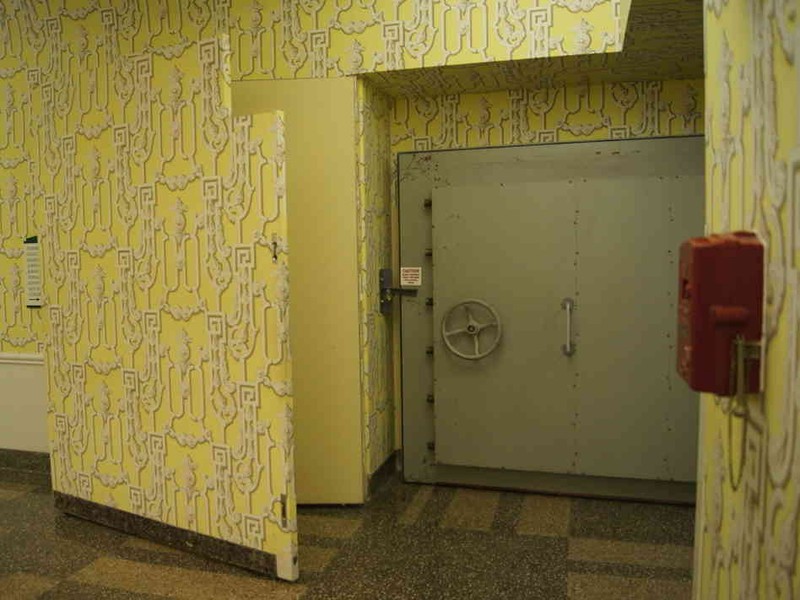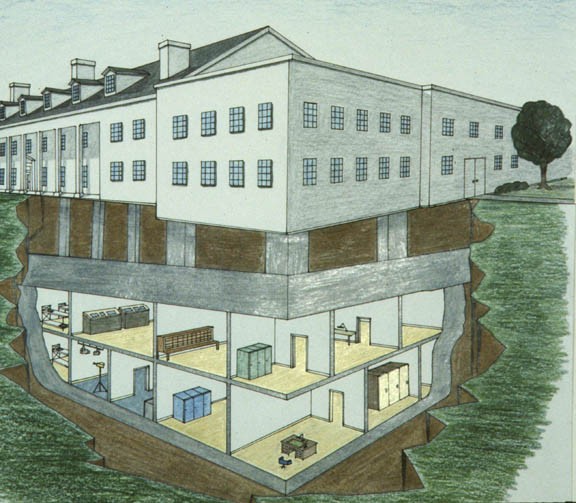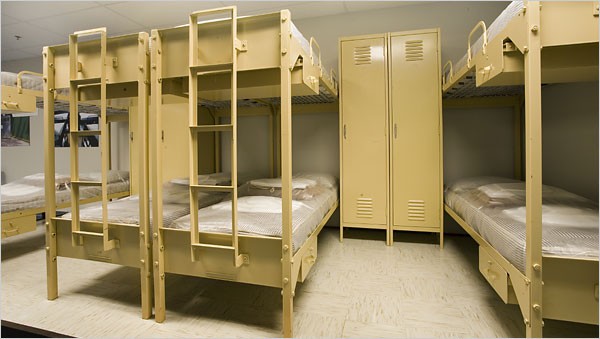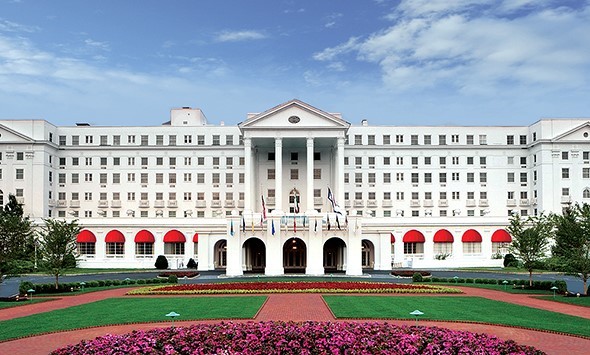The Greenbrier Bunker
Introduction
Text-to-speech Audio
Images
These blast doors guard the entrance to the bunker.

The bunker was built secretly underneath the West Virginia wing of the historic Greenbrier Resort.

The bunker includes dorms, a cafeteria, a clinic, and meeting rooms sufficient for the members of Congress to conduct business underground.

The Greenbrier Resort

Backstory and Context
Text-to-speech Audio
This expansive bunker is housed in the historic Greenbrier resort. Founded in 1778, the hotel garnered recognition for the healing properties of their sulfur springs. It gained prestige as important political figures from the South began to come for yearly trips. During World War II the resort was leased by the government to house foreign diplomats for several months and was then converted into a hospital for four years – the hotel's first stint as a government associate. It was then returned to commercial business 1948 and transformed into a pro-golf resort.
In December of 1958 construction began on a government-funded Emergency Relocation Center designed to house part of Congress in case of nuclear disaster during the Cold War. To avoid suspicion, the Greenbrier Resort simultaneously built a new addition called the West Virginia Wing.
The bunker itself covers approximately 112,000 square feet, and has walls made out of concrete two feet thick which were reinforced with steel. The facility is wedged 750 feet into the hillside, helping to mask its presence and offer protection from missiles. There were four blast doors, the largest measuring fifteen feet high, twelve feet wide, and nineteen and a half inches thick; it weighs about 28 tons. A grand total of $14 million was spent on construction of the bunker and the West Virginia Wing.
Numerous rooms were built to accommodate Congress, including space to live and work. The thick blast doors lead to 18 dormitories which can accommodate 1,100 people, several decontamination chambers, a cafeteria, a pharmacy, a clinic with 12 hospital beds, meeting rooms for the House and Senate, a power plant with purification equipment, three 25,000 gallon water storage tanks, three 14,000 gallon diesel fuel storage tanks and a communications area that includes a TV production studio and audio-recording booths.
Once completed in 1961, the hotel kept the bunker stocked with supplies and food for 30 years. Food trucks would come in the dead of night, and drivers were told they were just delivering food for the hotel. The delivery men backed their trucks up into the first section of the bunker to unload their food; this was all they saw of the bunker. The others that worked and maintained the bunker were told to blend in with the community, to avoid rousing suspicion. The men and women who ran the bunker worked undercover as hotel employees.
In its thirty years as an up kept, commissioned government bunker, the closest the Greenbrier Bunker ever came to being used was in 1962 during the Cuban Missile Crisis,yet it was never put into action. The hidden fortress remained a secret until May 31, 1992, when The Washington Post published an article exposing the facility. After the article’s release, the Greenbrier lost its contract with the government and the bunker was decommissioned. Today the bunker is no longer used by the government, but West Virginia’s nuclear safe house is now available for public and private tours.
